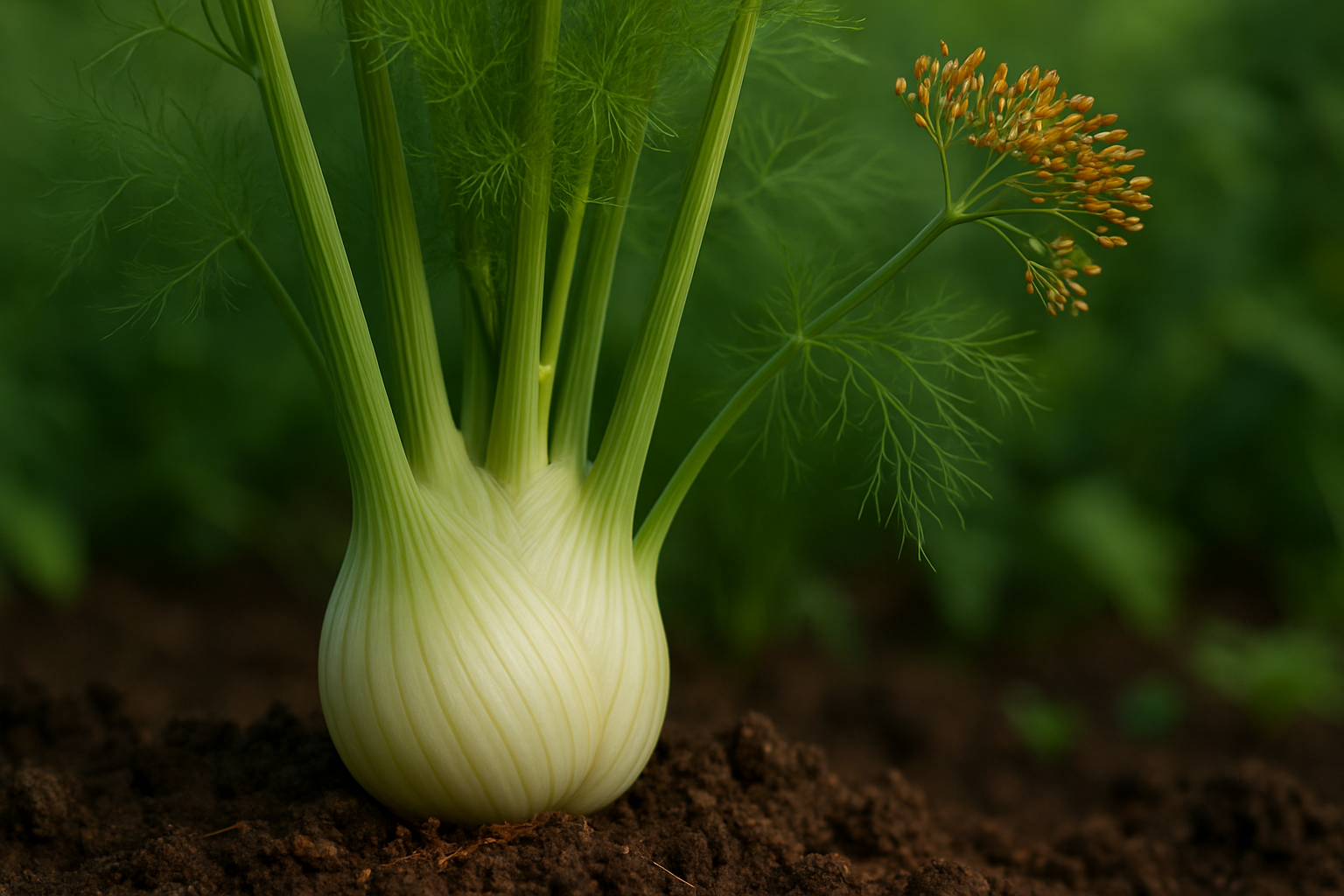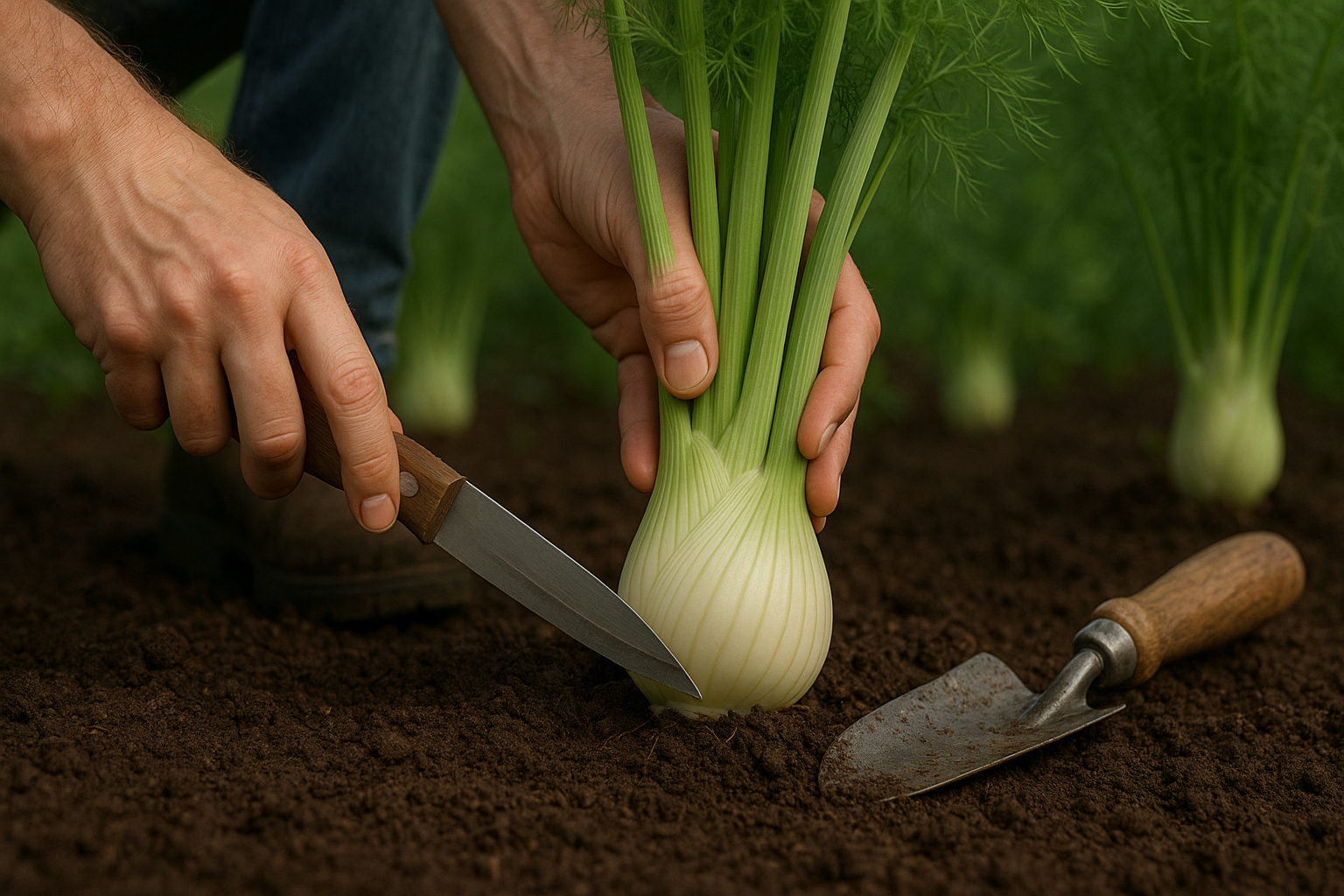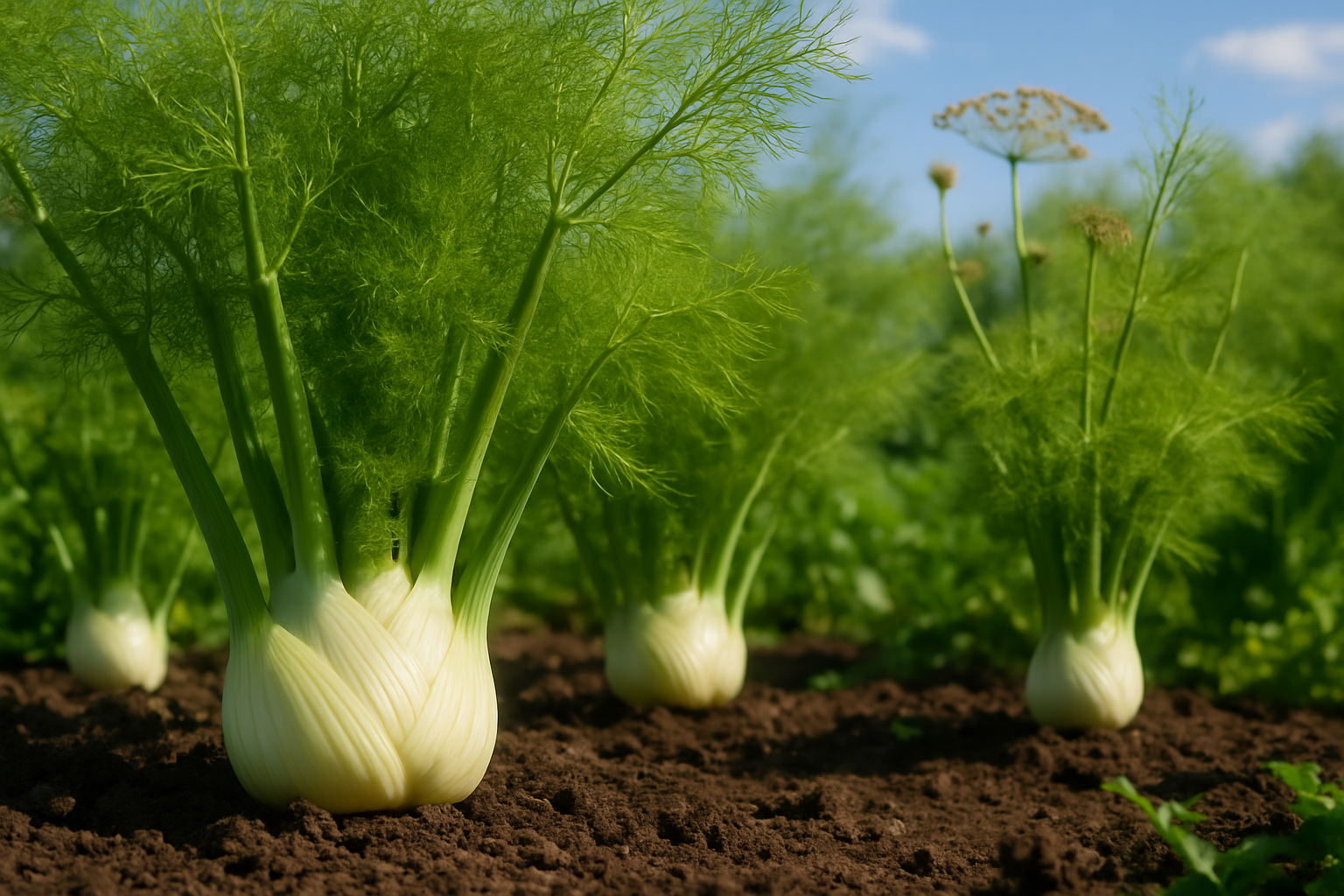Introduction
Learning how to harvest fennel can unlock a world of fresh flavors and natural remedies right from your garden. Fennel, with its aromatic bulbs, feathery fronds, and flavorful seeds, is prized in kitchens and herbal pantries alike—think crisp salads, soothing teas, and even digestive aids.
But getting the best from your fennel plants depends on harvesting at just the right moment for each part: bulbs for sweetness and crunch, fronds for a mild licorice note, and seeds for their intense, earthy spice. Too early or too late, and you might miss out on optimum flavor or texture. Whether you’re a beginner or have a few growing seasons under your belt, this guide will walk you through, step by step, when and how to pick each part.
Get ready for practical tips and handy timing cues so you can enjoy homegrown fennel at its finest.
Understanding Fennel

Fennel is a uniquely versatile plant, and understanding its three main edible parts—bulbs, leaves (fronds), and seeds—can unlock new flavors in your kitchen. The bulb is the swollen white base, crisp like celery with a mild, sweet licorice flavor. It’s great sliced raw in salads for crunch or roasted to bring out its natural sweetness.
Above the bulb, feather-light green fronds grow atop sturdy stalks. These leaves are delicate, tasting like a fresher, more herbal version of the bulb, and work well as a garnish, mixed into salads, stirred into sauces, or even blended into pestos for a pop of color and flavor.
At the top of the plant, after yellow flowers bloom, fennel produces seeds. These small, oval, green-brown seeds pack an intense anise-like flavor and are widely used as a spice in baking, sausages, and teas, or as a digestive aid.
Each part of the plant matures at a different pace—the bulb fills out early, fronds are ready throughout the growing season, and seeds develop once the flowers dry out, usually in late summer. This means with one fennel plant, you can harvest fresh leaves early, bulbs mid-season, and seeds at the end, getting the most from every stage of growth.
When to Harvest Fennel Bulbs, Leaves, and Seeds
Fennel is a versatile herb, and knowing when each part is ready to harvest can make a big difference in taste and yield.
For bulbs, look for a round, firm shape about the size of a tennis ball—typically 3-4 inches in diameter—with a pale green or white color and a crisp texture. Harvest usually happens around 80-90 days after sowing. If the bulb starts to split or feels spongy, it’s past its prime.
For the delicate, feathery leaves (fronds), the best time to harvest is when they’re vibrant green, tender, and before the plant flowers—usually as soon as the plant reaches 12-18 inches tall, which can be as early as 60 days from planting. Snip fronds as needed, but avoid taking more than a third of the plant at once to ensure continued healthy growth.
Fennel seeds are ready to collect once the yellow flowers have turned brown and the seed heads dry out and become hard to the touch, often around 110-120 days after planting. Look for a grayish-green color on the seeds, and always let them fully dry on the plant for the best flavor.
Keep in mind that high heat or drought can cause fennel to bolt—a process where the plant flowers prematurely—resulting in smaller, tougher bulbs and altered taste. If you notice the center stalk elongating rapidly, harvest the bulb immediately to preserve its texture.
Similarly, unseasonably cool spring temperatures can slow growth, pushing harvest dates later than expected. Monitoring your weather and plants closely lets you adjust your harvest timing for the best results, maximizing both flavor and yield regardless of the season’s challenges.
How to Harvest Fennel Bulbs

Harvesting fennel bulbs is a rewarding process, and a little care goes a long way to ensure you enjoy crisp, flavorful bulbs while keeping your garden in good shape. First, gather your tools: a sharp garden knife or pruners, and a trowel if your soil is compacted.
Fennel bulbs are ready to harvest when they reach about the size of a tennis ball and feel firm to the touch—typically about 90 days after sowing. To begin, water the ground lightly if it’s very dry; moist soil is easier to work with and helps prevent bruising your bulbs.
Gently clear soil from around the base of the bulb using your hands or a small trowel, exposing the white, swollen part. Hold the bulb firmly by the base and cut it cleanly from the taproot just below soil level using your knife or pruners. Avoid yanking or twisting the plant, as this can damage the bulb or nearby roots.
It’s best not to harvest just part of the bulb—cutting in sections usually leads to rot or stunted growth. Instead, cut the entire bulb and trim off the leafy fronds, which you can save for culinary use.
If you want to extend your harvest, plant fennel in succession so bulbs mature at different times rather than trying to pick partial bulbs. Harvesting carefully not only preserves the quality of your bulbs but also minimizes disturbance to the remaining fennel plants nearby, which is especially important if you’re growing a larger patch.
Collecting Fennel Leaves and Fronds
When collecting fennel leaves and fronds, it’s important to harvest in a way that keeps the plant healthy and thriving. Always use clean, sharp scissors or garden shears to snip individual fronds, cutting close to the stem but avoiding the base of the plant; this encourages new growth instead of stunting it.
Focus on taking just what you need, preferably from the outer sections, and leave the central fronds intact so the plant can continue to photosynthesize and grow. For the best flavor, harvest fennel leaves early in the morning, just after the dew has dried but before the sun gets too hot, as the essential oils — and thus the aroma and taste — are most concentrated then. Late spring and early summer tend to be the prime seasons when growth is tender and vibrant.
Once gathered, you can use the fronds fresh or store them for later. If you need to keep them for a short time, wrap the stems in damp paper towels and place them in a perforated plastic bag in the refrigerator. For longer storage, fennel leaves can be frozen: rinse, pat dry, chop if desired, and tuck them into airtight bags.
You can also dry them in bunches upside down in a cool, shaded place, then crumble and store in airtight jars for months of flavor.
Harvesting and Preserving Fennel Seeds
Harvesting fennel seeds at the right time is key to capturing their sweetly aromatic flavor. Wait until the flower heads turn brownish-yellow and the seeds start to loosen but haven’t fallen off. A dry, sunny morning is best—simply use garden scissors or sharp shears to snip off the seed heads, leaving a few inches of stem for easy handling.
Take your cuttings indoors and place the seed heads upside down in a paper bag or over a clean tray. Avoid plastic bags, which can trap moisture and cause seeds to mold. Allow them to air-dry for one to two weeks in a warm, well-ventilated area, gently shaking the bag every few days to help dislodge the seeds.
Once fully dry, rub the heads gently between your fingers or use a fine mesh sieve to separate seeds from stems and chaff. For longer shelf life, check that seeds are completely dry—they should feel hard and snap when bent.
To store, keep seeds in an airtight glass jar or resealable bag away from direct light and heat; a cool pantry is perfect. Add a simple label with the date and variety for easy reference. For culinary use, leave seeds whole to retain flavor, grinding as needed for recipes.
If you plan to sow fennel next season, keep aside only the plumpest, healthiest seeds, and use them within two years for the best germination rates. With these steps, you’ll have a fragrant stash ready for both kitchen adventures and garden renewal.
Post-Harvest Storage and Uses
Storing your freshly harvested bulbs, leaves, and seeds properly is key to keeping them fresh and flavorful for weeks or even months. For bulbs like garlic or onions, gently brush off excess dirt but don’t wash them. Let them air dry in a well-ventilated, cool, dark place—mesh bags or paper sacks work well to allow airflow and prevent mold.
Leafy herbs such as cilantro, basil, or mint last longest when trimmed, with stems placed in a jar of water (like cut flowers), covered loosely with a plastic bag, and stored in the fridge. For seeds, make sure they’re completely dry, then keep them in airtight containers in a cool, dark spot to maintain potency and prevent sprouting.
Quick Kitchen Ideas
- Bulbs can be roasted whole, sautéed in stir-fries, or infused into oils.
- Leaves can be tossed into salads, blended for pesto, or steeped for calming teas.
- Seeds are great sprinkled over soups, ground into spice blends, or added to homemade bread.
Simple Home Remedies
- Garlic bulbs are well-known for immune-boosting teas.
- Basil leaves can soothe insect bites.
- Fennel or coriander seeds may help with digestion when chewed or brewed as tea.
Preservation Tips
To extend shelf life, consider these preservation options:
- Freeze chopped herbs in ice cube trays with olive oil for easy portions.
- Dry leaves and seeds using a dehydrator or hang bunches upside-down in a dry room.
- Try pickling bulbs like shallots or garlic for tangy condiments.
With these easy methods, you’ll have the taste and health benefits of your harvest at your fingertips year-round.
Troubleshooting Common Harvesting Mistakes
Many gardeners fall into the trap of harvesting too early or too late, missing out on the best flavor and nutrition their crops can offer. Picking vegetables like tomatoes before they fully ripen can result in bland taste, while waiting too long risks losing them to pests or rot.
Plant damage is also common—yanking instead of gently cutting fruit or veggies can harm both the harvest and the plant’s future yield. Poor storage, such as leaving produce in damp conditions, leads to mold and spoilage.
To avoid these problems:
- Check crop-specific signs of ripeness.
- Use clean, sharp scissors or pruners for harvesting.
- Store produce in cool, dry places whenever possible.
Pay attention to how each crop responds, and don’t be afraid to experiment with timing. Every harvest is a learning opportunity; with each season, you’ll get better at knowing exactly when and how to pick for the best results.
